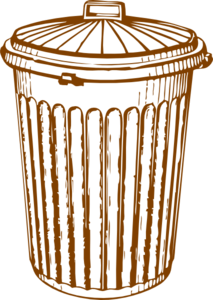The following is a guest blog by Steven John Hubbard of Newfoundland, Canada. The views of the author do not necessarily reflect the views of OVEC.
Is the Swedish model for burning waste and the model of recycling a success or a failure? The question arises, what to do with our waste? I have become a strong opponent of dumping our waste into landfills. Current studies indicate that this method of garbage disposal is a greater emitter of toxins and pollutants, including carbon dioxide and methane, into the atmosphere. Anerobic digestion of landfilled organic materials creates methane.
There are opposing views of the incineration method; burning everyday household waste in waste-to-energy plants. This method turns municipal waste into energy. The emissions from this method are cleaned through a series of scrubbers and filters. Studies state that this incineration method produces less harmful emissions than landfilling wastes or burning coal for energy. It actually addresses the waste problem while producing energy.
A 2018 article in the journal, Renewable and Sustainable Energy Reviews, states that we have come a long way since the first incinerators in the 19th century. We now have sophisticated systems to clean flue gases and utilize waste water in addition to rec covering heat and energy. A prime example of the on-going developing technology is the new waste to energy plant in West Virginia, USA.
BioHiTech Global started its new waste-to-energy plant recently in Martinsburg, West Virginia. A technology called HEBioT or high efficiency biological treatment separates garbage to collect biomass, plastics, and other carbon-based materials. The garbage is cleaned, composted, separated, and shredded, and then used as a fuel source. (On June 17, West Virginia Public Radio aired this story: ‘A Recyclable Commodity’ – Martinsburg’s New Waste-to-Energy Facility Turns Trash Into Fuel.)
Plastic is made from refined crude oil. There is an ongoing awareness of the impact of plastic on the environment. These impacts are well documented. Recently, Catherine McKenna the Canadian Federal Environment Minister, stated that “plastic isn’t the problem but plastic pollution is the problem.” I believe that the Canadian government isn’t serious when it comes to initiating a complete phase-out of single-use plastics or demanding a huge reduction in the manufacture of unnecessary plastics.
The combined industry, oil and gas and plastics, pump millions of dollars into the government coffers. This money in turn dictates the government’s agenda. According to a recent article in Narwhal, the oil industry spends millions of dollars lobbying In Canada each year. How climate change is addressed and whether we can reduce the emissions of greenhouse gases to the Paris Agreement (Accord de Paris) suggested 2-degree limit, hangs in the balance.
Given that, I have become an advocate of the Swedish model for recycling and using the waste-to-energy incineration method. We can debate the success of the Swedish model in comparison to other European country’s recycling programs, but we all can agree that what is happening in Sweden and Europe is far better than what is going on in Canada and the USA in respect to tackling the waste issue.
The author of this piece wants well-balanced, well thought out solutions that involve innovation. The leaders and people of Sweden have provided some solutions as they advocate for the environment by disposing of household waste in a manner that does not negatively impact the environment.
Steven Hubbard was born and raised near Sydney, Australia. He has worked and traveled to over 15 countries. He is trained as a chef and now makes his home in Newfoundland, Canada where he is trying to take action against climate change.
—–
Of course, one key step might be for us all to work on reducing our waste stream in the first place…












I want to see the evidence that scrubbers are enough to remove the toxins and furans and dioxins from burning plastic. I think this is a false solution. Recycling is probably better, but is not without its toxic impact and very littler of it is done. What we need to do is greatly reduce how much plastic we create, and look to transition to plastics made from biodegradable elements like mycelium or hemp.